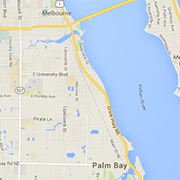Financial Reports Simplify Your Business

Thanks to the internet, it is easier than ever to create your own business.
Social media cultivates groups of hobbyists who create previously unseen demand for niche products. Digital marketplaces make it easy to list and sell creative works. Website building services make having a digital storefront a convenient reality.
The one thing that hasn’t changed is how overwhelming it can be to monitor finances. Luckily, there are reports you can run to simplify even that!
Before diving into any report, it is important to first reconcile your accounts. You’ve probably heard bookish movie accountants throw this term around, and with good reason. While I addressed this in an earlier article, let’s do a quick recap.
Reconciliation is the process of matching your accounting records to bank and credit card statements. If your accounts don’t match, none of the reports you run will be accurate.
Once you have reconciled your accounts, you can begin by running a profit and loss report. Also known as P&L, this statement lists the daily expenses and earnings of a company within a given timeframe.
Typically the easiest report for business owners to understand, each line of the P&L breaks down where a business is spending its money and how much it is making back as a result. It is best to run this report once a month.
At the end of the year, your tax provider will ask for a year-end P&L, as well as our next report, the balance sheet.
Unlike the P&L, balance sheets are a cumulative report. This means that while it can show the assets, liabilities, and equity of a given time, it will always compare those back to when the company started. The balance sheet is meant to show how your businesses assets and liabilities have increased, or decreased, the businesses overall value.
It is important to run this report once a month, as well, as it typically tracks larger expenses, such as company car payments and loans.
From there, running a cash flow report will merge the information of the P&L and balance sheet, giving a holistic view of the company. Where the P&L deals mostly in small consumable items and the balance sheet looks at assets and liabilities, the cash flow report combines the two to help make predictions based on past trends.
To simplify these reports further, the P&L would look at how much a restaurant spends on food, the balance sheet would consider the value of their industrial dishwasher, and the cash flow report would warn against buying a new oven the same day rent is due.
The invaluable insight these reports provide will make understanding your finances much easier.
At Your Service Bookkeeping
129 Hibiscus Blvd. Unit L
Melbourne, 32901
321-610-4595
sharon@aysbookkeeping.com
accounts@aysbookkeeping.com








